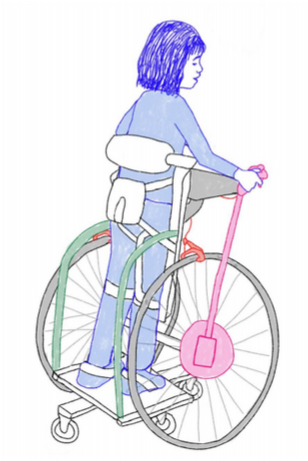A novel one-arm-drive mobile stander for children with hemiplegia
Team: Advanced BME Design Team: AgileStand
- Program: Biomedical Engineering
- Course:
Project Description:
Over 4,000 pediatric patients with cerebral palsy or a traumatic brain injury struggle to control one of their arms and one or both of their legs, and commonly use wheelchairs as a means of independent mobility. Prolonged sitting causes severe physiological consequences, including deep vein thrombosis, muscle atrophy and poor respiratory and cardiovascular health – issues that can be alleviated with just a few hours of standing each day. Additionally, prolonged sitting limits their independence and exposes them to social stigma, depression, and anxiety due to their inability to meet their peers at eye level and take part in standing activities.
Current options for standing mobility consist of either very large and expensive power standers or mechanical mobile standers which are designed to be driven with two arms. Power standers are not only large and expensive, but also fail to provide the physical benefits of manual self-propulsion. Existing self-propelled mechanical standers cannot be effectively operated using one arm and are therefore unusable by this underserved population.
Team UNIStand is designing and building a mechanical, one-arm-drive mobile stander. Both cost-effective and reliable, the AgileStand is more financially accessible than competing devices. The stander allows users to propel themselves and control the direction of the stander using only their
unaffected arm. It also allows users to maintain a prone standing position and put weight on their legs while being comfortably supported by the stander. UNIStand’s AgileStand mitigates the adverse mental and physiological health problems caused by prolonged sitting and enables users to achieve greater independence.



